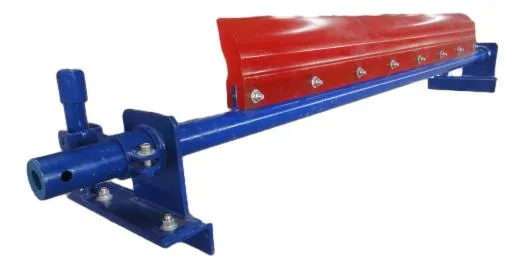 Afrikaans
Afrikaans  Albanian
Albanian  Amharic
Amharic  Arabic
Arabic  Armenian
Armenian  Azerbaijani
Azerbaijani  Basque
Basque  Belarusian
Belarusian  Bengali
Bengali  Bosnian
Bosnian  Bulgarian
Bulgarian  Catalan
Catalan  Cebuano
Cebuano  Corsican
Corsican  Croatian
Croatian  Czech
Czech  Danish
Danish  Dutch
Dutch  English
English  Esperanto
Esperanto  Estonian
Estonian  Finnish
Finnish  French
French  Frisian
Frisian  Galician
Galician  Georgian
Georgian  German
German  Greek
Greek  Gujarati
Gujarati  Haitian Creole
Haitian Creole  hausa
hausa  hawaiian
hawaiian  Hebrew
Hebrew  Hindi
Hindi  Miao
Miao  Hungarian
Hungarian  Icelandic
Icelandic  igbo
igbo  Indonesian
Indonesian  irish
irish  Italian
Italian  Japanese
Japanese  Javanese
Javanese  Kannada
Kannada  kazakh
kazakh  Khmer
Khmer  Rwandese
Rwandese  Korean
Korean  Kurdish
Kurdish  Kyrgyz
Kyrgyz  Lao
Lao  Latin
Latin  Latvian
Latvian  Lithuanian
Lithuanian  Luxembourgish
Luxembourgish  Macedonian
Macedonian  Malgashi
Malgashi  Malay
Malay  Malayalam
Malayalam  Maltese
Maltese  Maori
Maori  Marathi
Marathi  Mongolian
Mongolian  Myanmar
Myanmar  Nepali
Nepali  Norwegian
Norwegian  Norwegian
Norwegian  Occitan
Occitan  Pashto
Pashto  Persian
Persian  Polish
Polish  Portuguese
Portuguese  Punjabi
Punjabi  Romanian
Romanian  Russian
Russian  Samoan
Samoan  Scottish Gaelic
Scottish Gaelic  Serbian
Serbian  Sesotho
Sesotho  Shona
Shona  Sindhi
Sindhi  Sinhala
Sinhala  Slovak
Slovak  Slovenian
Slovenian  Somali
Somali  Spanish
Spanish  Sundanese
Sundanese  Swahili
Swahili  Swedish
Swedish  Tagalog
Tagalog  Tajik
Tajik  Tamil
Tamil  Tatar
Tatar  Telugu
Telugu  Thai
Thai  Turkish
Turkish  Turkmen
Turkmen  Ukrainian
Ukrainian  Urdu
Urdu  Uighur
Uighur  Uzbek
Uzbek  Vietnamese
Vietnamese  Welsh
Welsh  Bantu
Bantu  Yiddish
Yiddish  Yoruba
Yoruba  Zulu
Zulu Mounting Brackets for Conveyor Roller Installation and Support Solutions
Understanding Conveyor Roller Mounting Brackets Essential Components for Efficient Material Handling
Conveyor systems are vital in various industries, from manufacturing to warehousing, for transporting materials efficiently. One of the critical components of these systems is the conveyor roller mounting bracket. These brackets play a pivotal role in providing stability, support, and alignment for conveyor rollers, ultimately ensuring smooth and reliable operation of the conveyor belt.
What Are Conveyor Roller Mounting Brackets?
Conveyor roller mounting brackets are fixtures that secure the rollers to the conveyor frame. They are designed to support the weight of the materials being transported and ensure that the rollers can rotate freely. These brackets come in various designs and materials, accommodating different conveyor types, sizes, and load capacities. Their design is a crucial factor in the overall performance and durability of the conveyor system.
Types of Conveyor Roller Mounting Brackets
1. Fixed Mounting Brackets These are the most common type, providing a stationary point for the roller. They are often used in straight sections of conveyors where the alignment of rollers does not need to change.
2. Adjustable Mounting Brackets These brackets allow for vertical adjustments of the roller height. They are particularly useful in applications where the load may vary or in systems where products need to be presented at different heights.
3. Self-Aligning Mounting Brackets Designed to compensate for misalignment, these brackets ensure that the rollers remain properly positioned, regardless of potential shifts caused by loads or wear over time.
Materials Used in Bracket Construction
conveyor roller mounting brackets

The choice of material for roller mounting brackets is essential for durability and performance. Common materials include
- Steel Known for its strength and durability, steel brackets can handle heavy loads and are often coated to resist corrosion. - Aluminum Lightweight and resistant to rust, aluminum brackets are suitable for lighter applications or where weight reduction is necessary.
- Plastic Used in applications where weight is a critical factor and where exposure to harsh environments is limited, plastic brackets are often a cost-effective solution.
Importance of Proper Installation
The effectiveness of conveyor roller mounting brackets significantly depends on their proper installation. Incorrectly installed brackets can lead to misalignment, increased wear on the rollers, and even failure of the conveyor system. Therefore, following manufacturer guidelines and ensuring that brackets are securely fastened and properly aligned is crucial for maintaining optimal performance.
Maintenance and Inspection
Regular maintenance and inspection of conveyor roller mounting brackets are essential to ensure their longevity and effectiveness. Checking for wear and tear, rust, or misalignment should be part of routine conveyor maintenance. Proper lubrication of the rollers and ensuring that brackets are securely fastened can prevent operational issues and extend the lifespan of the conveyor system.
Conclusion
Conveyor roller mounting brackets may seem like small components in the larger picture of conveyor systems, but their role is fundamental to the efficient and reliable operation of material handling systems. Understanding the types, materials, and proper installation techniques of these brackets can help businesses optimize their conveyor systems, reduce downtime, and enhance productivity. As industries continue to evolve and grow, ensuring that every component of a conveyor system is functioning at its best will be vital for maintaining a competitive edge in the marketplace.
-
Revolutionizing Conveyor Reliability with Advanced Rubber Lagging PulleysNewsJul.22,2025
-
Powering Precision and Durability with Expert Manufacturers of Conveyor ComponentsNewsJul.22,2025
-
Optimizing Conveyor Systems with Advanced Conveyor AccessoriesNewsJul.22,2025
-
Maximize Conveyor Efficiency with Quality Conveyor Idler PulleysNewsJul.22,2025
-
Future-Proof Your Conveyor System with High-Performance Polyurethane RollerNewsJul.22,2025
-
Driving Efficiency Forward with Quality Idlers and RollersNewsJul.22,2025





























